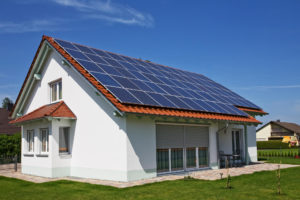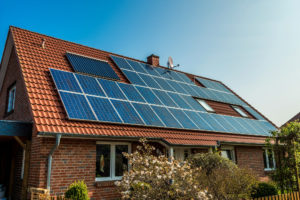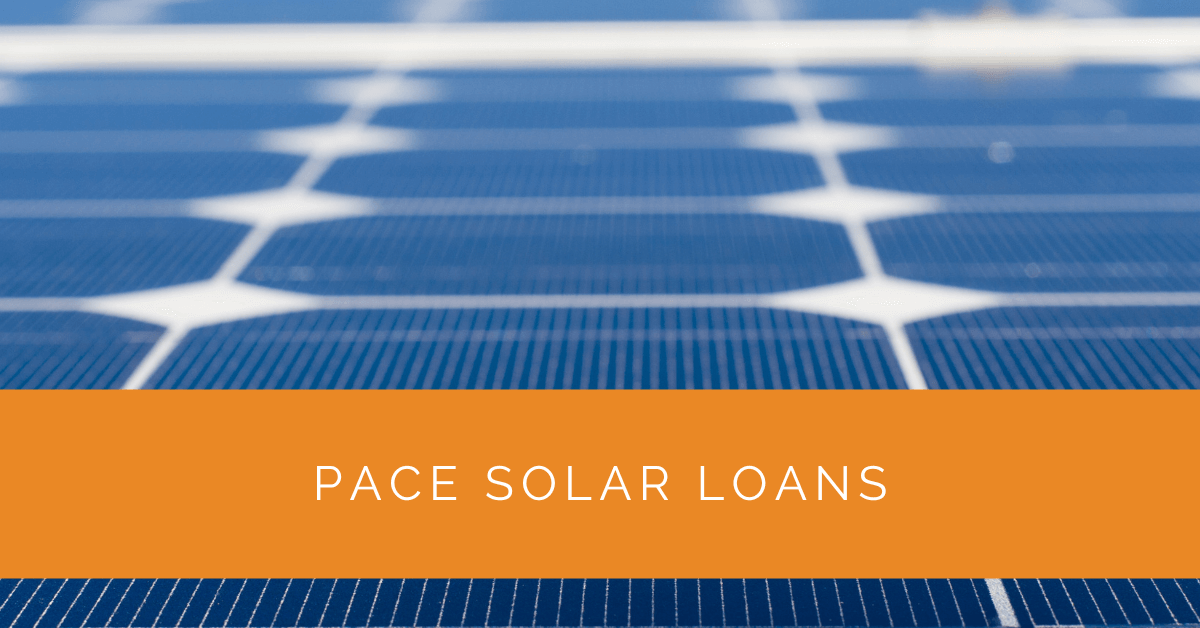Solar energy is becoming increasingly popular for homeowners seeking clean, cost-effective power solutions. However, the upfront costs of installing solar panels can be a deterrent for many. This is where PACE Solar Loans come into play, providing homeowners with an accessible financing option to upgrade their properties with renewable energy systems. In this article, we will explore the ins and outs of PACE Financing, delve into the advantages of PACE Solar Loans, discuss the eligibility criteria, and provide valuable information to help you make an informed decision.
Contents
- 1 Key Takeaways
- 2 What is PACE Financing?
- 3 Eligibility and Qualification: Who Can Benefit from PACE Financing?
- 4 The Application Process: From Exploration to Implementation
- 5 Repayment and Financial Considerations: Planning for the Future
- 6 Advantages and Disadvantages of PACE Loans
- 7 Expert Insights From Our Solar Panel Installers About PACE Solar Loans
- 8 Experience Solar Excellence with Us!
- 9 Conclusion
- 10 FAQ
Key Takeaways
- PACE Solar Loans provide homeowners an accessible financing option to upgrade their properties with renewable energy systems, such as solar panels.
- By embracing PACE Financing, homeowners can enjoy advantages like upfront savings, reduced energy bills, and environmental benefits.
- To qualify for PACE Financing, homeowners must meet eligibility criteria, choose qualified contractors, and understand the repayment process and potential impact on property taxes.
What is PACE Financing?
PACE Financing, also known as Property Assessed Clean Energy financing, is a specialized program that aims to facilitate and incentivize the adoption of renewable energy systems and energy-efficient upgrades in residential properties. By providing property owners with accessible financing options, PACE Financing promotes sustainability and helps homeowners significantly reduce their carbon footprint and energy consumption.
Property owners can obtain funds to install solar panels, upgrade insulation, replace outdated HVAC systems, or implement other energy-saving measures to participate in PACE Financing. The key feature of PACE Financing is that the repayment is tied to the property itself rather than the individual homeowner. If the property is sold, the remaining balance is transferred to the new owner, and the benefits and responsibilities associated with the PACE Financing.
Eligibility and Qualification: Who Can Benefit from PACE Financing?
To qualify for PACE Financing, homeowners need to meet certain criteria set by the specific program and local authorities. While eligibility requirements may vary, the following factors are commonly considered:
- Property Ownership: PACE Financing is typically available for residential properties, including single-family homes, townhouses, condominiums, and even certain types of commercial properties. The homeowner must hold legal ownership of the property.
- Property Tax Status: Property owners must be up-to-date on their property taxes. This ensures that the PACE Assessment, which is added to the property tax bill, can be implemented and repaid effectively.
- Local Program Availability: PACE Financing programs are implemented at the local level, often by municipal or county governments. Homeowners need to check if the PACE program is available in their area and if they meet the specific requirements outlined by the program administrators.
- Eligible Improvements: PACE Financing typically covers a range of eligible improvements, including solar panel installations, energy-efficient HVAC systems, insulation upgrades, water-saving measures, and more. The specific list of eligible improvements may vary depending on the program.

The Application Process: From Exploration to Implementation
The process of obtaining PACE Financing involves several key steps that homeowners should be aware of:
- Research and Program Selection: Research and identify the PACE Financing programs available in your area. Reach out to local program administrators or visit their websites to gather information about the program requirements, eligible improvements, and participating lenders.
- Project Planning and Contractor Selection: Once you have selected a PACE Financing program, planning your project and engaging a qualified contractor is essential. Work with the contractor to assess your property’s energy needs, identify the most suitable improvements, and obtain project estimates.
- Completing the Application: With the assistance of the selected contractor, complete the PACE Financing application provided by the program administrator. The application typically includes details about the project, contractor information, and required supporting documentation, such as proof of property ownership and current property tax status.
- Application Review and Approval: After submitting the application, the program administrator will review the proposal to ensure compliance with program guidelines and eligibility criteria. This review may involve a thorough assessment of the project’s feasibility, cost estimates, and energy-saving potential.
- Financing and Project Implementation: Upon approval, the program administrator will connect you with a participating lender who will provide the necessary funds for the approved project. Once the financing is secured, the contractor can proceed with the installation or implementation of the energy-efficient upgrades.
Repayment and Financial Considerations: Planning for the Future
When entering into PACE Financing, homeowners should carefully consider the repayment process and its financial implications. Here are some important points to keep in mind:
- PACE Assessment Repayment: The PACE Assessment, representing the financed amount, is repaid through a special assessment added to the property tax bill. The repayment period can range from 5 to 20 years, depending on the program and the amount financed.
- Impact on Property Taxes: Understanding how PACE Financing can affect your property tax bill is important. While the additional assessment increases the overall tax liability, the potential energy savings resulting from the installed improvements can often offset or even exceed the added cost.
- Transfer of PACE Financing: If you decide to sell your property before the PACE Assessment is fully repaid, the remaining balance is transferred to the new owner. This transferability allows the new owner to enjoy the benefits of the energy-efficient upgrades while taking on the responsibility of continuing the PACE Financing repayments.
- Financial Planning and Potential ROI: Homeowners should consider the long-term financial implications and potential return on investment (ROI) when evaluating PACE Financing options. Assessing the anticipated energy savings, the expected increase in property value, and the overall impact on monthly expenses can help in making informed financial decisions.

Advantages and Disadvantages of PACE Loans
When considering PACE Financing for your energy-efficient improvement projects, it’s essential to weigh the advantages and disadvantages to make an informed decision. While PACE Loans offer several benefits, it’s also important to be aware of potential drawbacks.
Advantages of PACE Loans
- Accessibility and Upfront Savings: PACE Loans provide homeowners with a financing option that is accessible and often more attainable than traditional loans. These loans typically have lenient credit requirements and may not require a substantial down payment, allowing homeowners to access upfront savings for their energy-efficient upgrades.
- Energy Savings and Reduced Bills: By utilizing PACE Loans to install solar panels or implement energy-efficient improvements, homeowners can significantly reduce their energy consumption and lower their utility bills. These long-term cost savings can offset the monthly repayment of the PACE Loan and lead to increased financial savings over time.
- Property Value Enhancement: The installation of energy-efficient upgrades can enhance the value of your property. Solar panels and other energy-saving improvements are considered attractive features for potential buyers, as they offer long-term energy savings and contribute to a sustainable lifestyle. This can potentially increase the resale value of your home.
- Environmental Benefits: PACE Loans allow homeowners to contribute to a cleaner environment by reducing their carbon footprint and reliance on non-renewable energy sources. By adopting renewable energy systems and energy-efficient upgrades, homeowners actively participate in mitigating climate change and promoting a more sustainable future.
Disadvantages of PACE Loans
- Property Lien and Transferability: One of the primary concerns with PACE Loans is that they create a property lien. The PACE Assessment takes priority over other liens, such as mortgages, which may complicate matters if you plan to refinance or sell your property before the loan is fully repaid. It’s crucial to consider the impact of the PACE lien on your future plans and discuss this aspect with a financial advisor or real estate professional.
- Potential Impact on Property Taxes: While PACE Loans can lead to long-term energy savings, the PACE Assessment added to your property tax bill may increase your overall property tax liability. It’s important to assess the financial implications of the increased tax burden alongside the anticipated energy savings to determine the net benefit of the PACE Financing for your specific situation.
- Repayment Obligation: PACE Loans typically involve a long-term repayment commitment, ranging from 5 to 20 years. Homeowners should carefully consider their financial capacity and ability to fulfill the repayment obligations over the specified term. Failure to make timely payments could result in penalties or potential default on the loan, leading to further complications.
- Availability and Program Limitations: PACE Loans may not be available in all areas or for all types of properties. The availability and terms of the PACE program can vary from region to region, and not all improvements may be eligible for financing. It’s important to thoroughly research and consult with local program administrators to understand the specific limitations and requirements in your area.
By considering the advantages and disadvantages of PACE Loans, you can make an informed decision regarding your energy-efficient improvement projects. Careful evaluation of your financial situation, future plans, and eligibility for other financing options can help you determine if PACE Financing aligns with your goals for sustainability, affordability, and long-term financial well-being.
Expert Insights From Our Solar Panel Installers About PACE Solar Loans
PACE Solar Loans are a fantastic option for homeowners looking to finance their solar installations without the burden of high upfront costs. The repayment through property taxes makes it a seamless and accessible solution.
Senior Solar Technician
By leveraging PACE Financing, homeowners can enjoy immediate energy savings and long-term benefits. It’s a smart financial decision that also supports environmental sustainability.
Lead Installation Specialist
Understanding the repayment structure and eligibility criteria is crucial. We always advise homeowners to thoroughly evaluate their options and consult with professionals to maximize the benefits of PACE Solar Loans.
Solar Maintenance Expert
Experience Solar Excellence with Us!
Trust in Solar Panels Network USA, where our seasoned experts deliver top-quality solar solutions for homes and businesses nationwide. With a legacy of countless successful installations and a commitment to sustainable energy, we’re your reliable partner in the solar journey. Ready for a brighter, eco-friendly future? Call us now at (855) 427-0058 and harness the power of the sun!
Conclusion
PACE Solar Loans offer a viable and accessible financing option for homeowners looking to embrace renewable energy and enhance their property’s energy efficiency. With its advantages in terms of upfront savings, energy bill reduction, and environmental benefits, PACE Financing opens doors to sustainable living while positively impacting the future. By exploring the eligibility requirements, understanding the application process, and considering the financial implications, homeowners can make informed decisions and harness the sun’s power through PACE Solar Loans.
Now that you have a comprehensive understanding of PACE Financing and its benefits, take the first step toward an energy-efficient future by exploring the PACE program in your area and switching to solar power.
FAQ
How does PACE financing work?
PACE financing, or Property Assessed Clean Energy financing, allows property owners to fund energy-efficient upgrades and renewable energy installations through a special assessment added to their property tax bill. The financed amount is repaid over a fixed term, typically 5 to 20 years, through these property tax assessments. This unique financing mechanism enables homeowners to access upfront funds for improvements that enhance energy efficiency and promote sustainability.
Who funds PACE loans?
PACE loans are typically funded by private lenders or capital providers specializing in financing energy-efficient projects. These lenders partner with local governments and municipalities that administer the PACE program. The lenders provide the funds upfront, which are then repaid by homeowners through special property tax assessments.
How is a PACE loan paid back?
A PACE loan is repaid through a special assessment added to the owner’s regular property tax bill. The local tax authority typically collects the assessment and then remitted to the lender. The repayment period, interest rates, and loan terms are agreed upon at the time of financing. Homeowners should carefully review the terms and conditions of the loan, including the repayment schedule, to understand their obligations and ensure timely payments. It’s important to note that the Pace Assessment takes priority over other liens, such as mortgages, and stays with the property, even if ownership changes.
About the Author
Solar Panels Network USA stands at the forefront of solar energy solutions, driven by a team of seasoned solar engineers and energy consultants. With over decades of experience in delivering high-quality solar installations and maintenance, we are committed to promoting sustainable energy through customer-centric, tailored solutions. Our articles reflect this commitment, crafted collaboratively by experts to provide accurate, up-to-date insights into solar technology, ensuring our readers are well-informed and empowered in their solar energy decisions.

